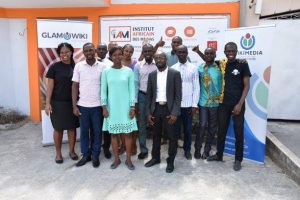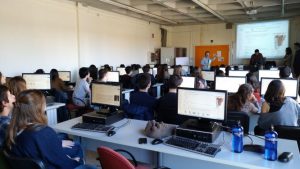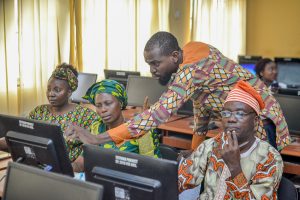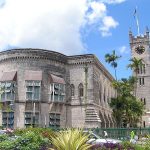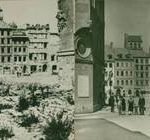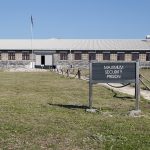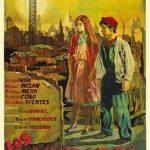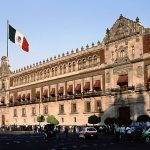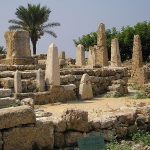In our first ‘Now and Next’ blog, we explored a number of potential trends that are likely to shape the library field as it – and the communities it serves – emerge from the restrictions imposed during the COVID-19 pandemic.
Just as in the first blog, it is clear that we are still in the midst of the crisis. Even as some countries are able to relax controls on people’s lives and activities, others are prolonging them. In some cases, we have seen decisions to re-impose them, as the disease has returned. It will likely be a long time until we can talk about a post-pandemic world.
Nonetheless, as calls grow for clarity about how governments plan to go about returning to normal, it will make sense to engage with governments. Indeed, this is likely to be particularly necessary in the light of the serious economic impact COVID-19 is already having.
As institutions which do depend on the financial health of the governments, institutions or other organisations that support them, it will be as important as ever to ensure libraries – and their values – are understood as having an essential role in the recovery, or even in creating better societies and economies in future.
We can only do this by reaching out and making the case. This blog therefore looks to explore potential advocacy agendas in the immediate, medium and longer-term. In this, the short-term is defined as now – with libraries in many countries physically closed. The medium-term is the situation as libraries start to re-open and restrictions are lifted. The long-term refers to the time when the pandemic can be declared over, and only minimal if any rules are in place to address the spread of the disease.
For each, the blog suggests eight key possible messages. Do you agree? Have we missed anything? We welcome your comments!
The Short-Term: Provide Relief, Support Research
- Copyright should not become a barrier: it should not be the case that just because a library has closed its doors, its users cannot draw on its resources. Governments should make it clear that at a time that physical access is often impossible – for everything from research to storytimes – digital alternatives can take its place.
- Licensing terms should not override the public interest: where the terms of licences under which libraries access content prevent their use, rightholders should be ready to introduce necessary flexibilities to allow libraries to carry out their missions. Where this does not happen, libraries should be able to bypass licensing terms in the course of their work where this does not cause unreasonable harm to rightholders.
- Libraries need to be enabled to support their communities: faced with increasing demand for digital content, some governments have already been ready to increase acquisitions budgets. More broadly, other restrictions – such as on offering public access to WiFi, or on lending library equipment or materials to vulnerable groups – should be relaxed if these create problems.
- COVID-19 must not become an excuse for bad government: many countries have adopted a state of emergency in order to allow steps to be taken against COVID-19. However, the application of these powers should not lead to decisions in other areas being taken without proper scrutiny, and all decision-making needs to be properly documented for future accountability.
- Restrictions on free expression and access to information must be kept to a minimum: some governments have moved to limit free expression as part of their response, while social media companies are also increasing their efforts to close sites disseminating deliberately false information. Such restrictions should be avoided if other means of achieving the same goals are available, and otherwise applied carefully and proportionately. It is better to promote positive interventions such as media and information literacy.
- The cultural sector needs support to avoid disaster: while some in the cultural field are benefitting strongly from increased demand for their work (especially digital content), others – especially those who rely on performances or physical visitors – are suffering. Faced with ongoing costs, these require support if they are to avoid having to give up and close their doors for good.
- Greater dependence on online tools cannot come at the expense of rights: there has been an explosive rise in use of digital tools to work and communicate. However, we need to be vigilant to ensure that this does not increase the risk of cybersecurity breaches or other losses of personal data.
- Open science should be the default: there have been welcome moves to adopt open science practices in research specifically around COVID-19, with the National Library of Medicine in the United States creating the COVID-19 Open Research Dataset (CORD). These should be expanded and supported by governments, and reach out to related disciplines in order to help ensure better informed responses to the pandemic.
The Medium-Term: Returning to Not-Quite-Normal, Safely
- Official approaches to re-opening need to take safety into account: the news of libraries being able to reopen will be both a source of encouragement and worry for many. Often small, not necessarily set out to allow people to maintain social distance, and offering a lot of direct personal support, it should be clear that libraries are high social-interaction spaces. Where reopening does happen, it should be based on a sound understanding of how libraries really work.
- Exceptional measures on access to content should not be lifted until the need for them is over: many of the special measures put in place, for example, by publishers to offer remote access to books and articles, or online story-times, are time-limited. While some have noted that their application can be extended, it will be important to keep up the pressure to maintain them until all library users are able to make use of library services again as before.
- There needs to be meaningful investment in helping learners to catch up: the internet has allowed far more teaching and learning to take place during the pandemic than could have been imagined even a few years ago. However, many have underlined that it is still not the same as being in class, and it will be necessary to help learners catch up, especially those in more vulnerable situations. Governments need to have a plan for this.
- Insofar as they affect access to government information, states of emergency should be lifted as soon as possible: states of emergency should never be indefinite, given the threat they pose to fundamental rights. In particular, it is important for information about government responses to the virus to be made open, in order to inform researchers as well as journalists.
- Ensure that efforts continue to help those who will need to be subject to restrictions for longer: the loosening of restrictions is likely to move at a different pace for different groups, with already marginalised populations – older persons, those with disabilities, or prison populations to name just a few – likely to need to wait longer. As the rest of society moves back as close to normality as possible, we cannot forget those for whom this isn’t the case.
- Ensure that libraries are supported to take on the upcoming rise in demand: it seems likely that not only will libraries welcome back people who have missed their resources, services and spaces, but also those needing to use them to get their lives back on track after losing jobs and even homes. Libraries have a proven track record here, but scaling this up will require continued support.
- Ensuring that lifting restrictions on movement doesn’t mean new restrictions on privacy: the potential use of tracking apps to contribute to the safe lifting of limitations has received a lot of limitations. If these are introduced, it will be important to protect privacy, ensure that users consciously opt in, and to ensure that no more information is collected and retained than strictly necessary.
- Continue to promote open science, and invest in discoverability and interoperability: managing the lifting of restrictions is going to require extensive use of research, drawing on a variety of disciplines. We will need to strengthen the infrastructures and resources for open science, allowing researchers to work globally, and across different areas of study, with meaningful tools for discovery and analysis.
The Long-Term: Build Back Better
- Ensure copyright and competition laws are truly fit for the digital age: the crisis has brought into very stark relief the difference between what copyright laws permit as concerns digital and non-digital uses, and the degree to which libraries have had to rely on rightholder goodwill – rather than the law – in order to continue to fulfil their missions. This should not continue. Moreover, the fact that access to and use of digital content tends to be shaped by the choices of rightholders, rather than the law, has also helped underline the need to look at these markets from a competition angle.
- Mobilise libraries in the wider effort to rebuild lives, societies and economies: over recent years, libraries globally have worked to realise their potential as a key part of the social infrastructure of their communities. In addition to all they do to promote wellbeing as cultural spaces and centres, they can also act as platforms and partners for efforts to support employment, entrepreneurship and education. As such, they need to be part of relevant government strategies at all levels.
- Ensure proper scrutiny of decision-making during the crisis: governments at the moment are taking crucial decisions about societies and economies, which may have significant and long-lasting effects. In order to be able to hold them to account, we will need to ensure that researchers, the press, and the public have the access they need to information to allow them to participate fully in a healthy democratic life.
- Learn from the experience to promote inclusion and well-being for all: the pandemic has helped underline the vulnerability of many groups, whose living conditions, livelihoods or other characteristics have made them more susceptible to the pandemic and/or harder hit by its consequences. These should lead us to design policies and programmes in general that are truly inclusive and pro-equity in future.
- Achieve universal meaningful connectivity: having access to the internet made it possible to continue with more aspects of life during the crisis that previously could not have been imagined. However, this has only been the case for the half of the world which enjoy connectivity. Even those who are online do not necessarily have the skills and confidence necessary to make the most if it. We need to invest in helping everyone become active and capable internet users.
- Invest in effective public (health) information systems: one key lesson from the crisis has been the importance of developing a meaningful infrastructure for providing access to information to people. This is not just a case of transmitting information, but rather being able to listen and adapt messages to ensure they have most impact, as well as to build literacy skills for all. Libraries can be part of this.
- Move to a new level in open science and collaborative research: the potential of open science to inform better policymaking has been clear in the current crisis. It should become the norm, with meaningful investment in platforms, reforms to assessment and recognition frameworks, and careful efforts to ensure that researchers and readers do not risk being locked into any individual providers’ products. Cross-border research should be enabled by appropriate international action on copyright reform.
- Don’t forget other challenges!: clearly COVID-19 is the focus of attention at the moment. Nonetheless, there are other challenges facing the world at the moment, not least climate change, and the rest of the United Nations 2030 Agenda. Clearly, the way we address these may change, but the underlying priorities remain if we are to ensure that we don’t just return to normal, but to better.

